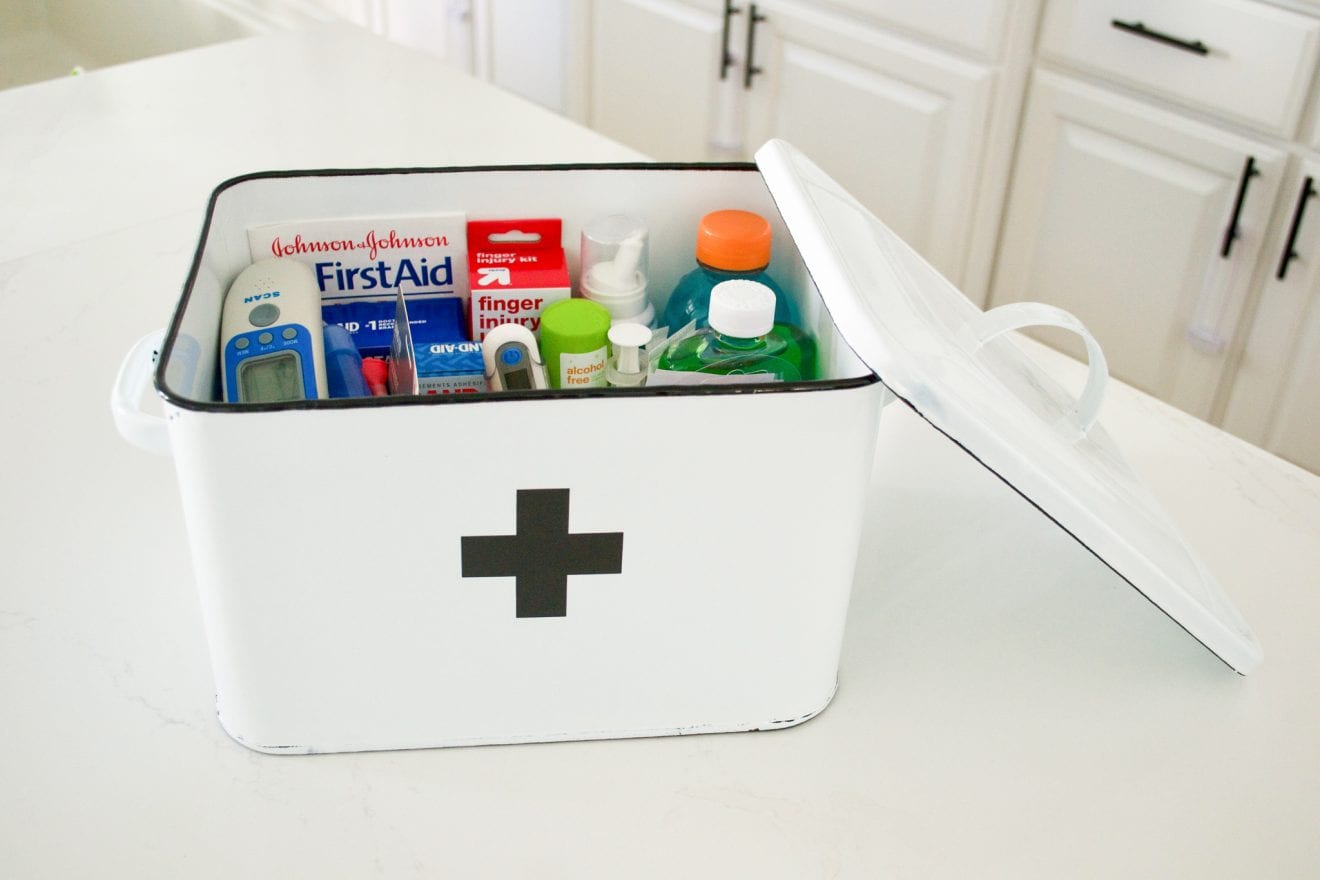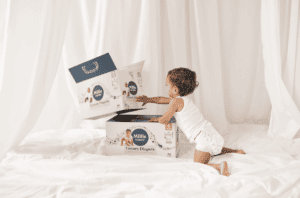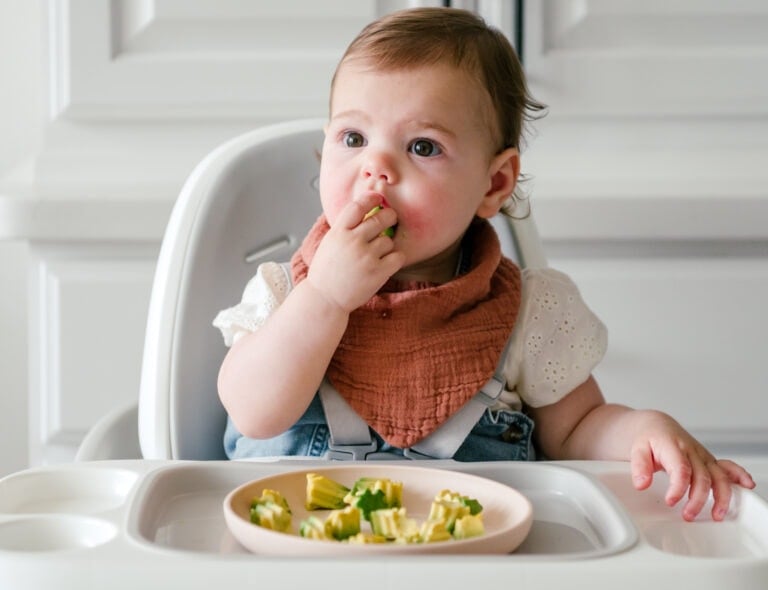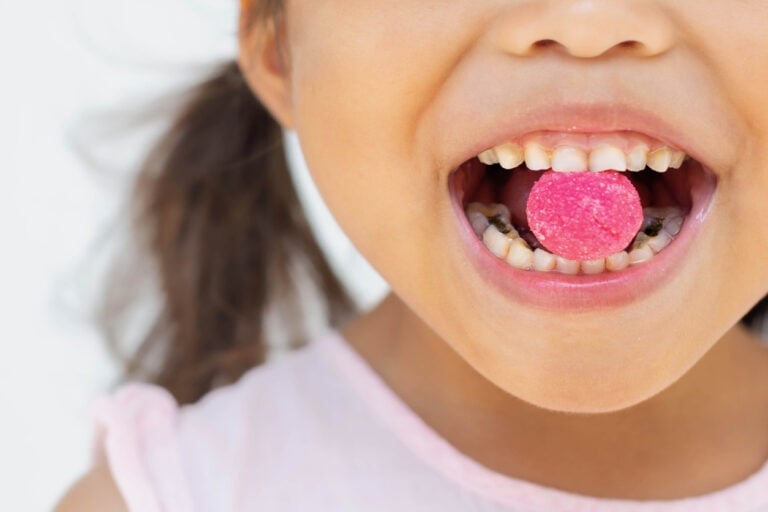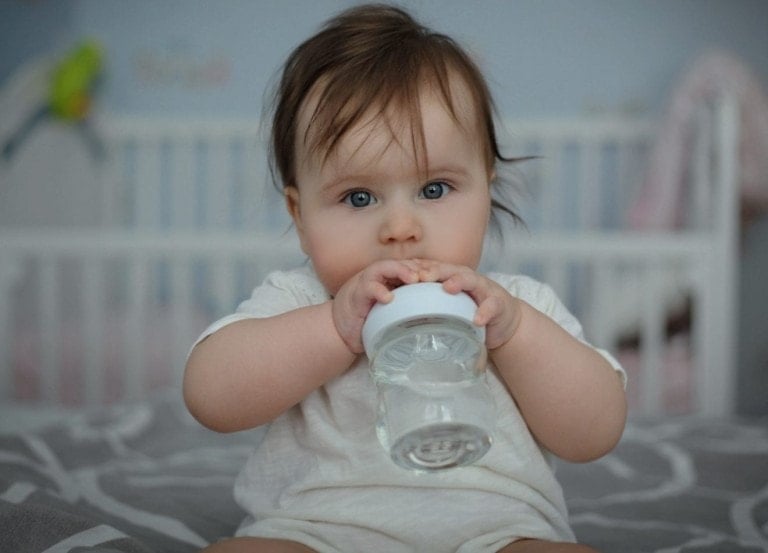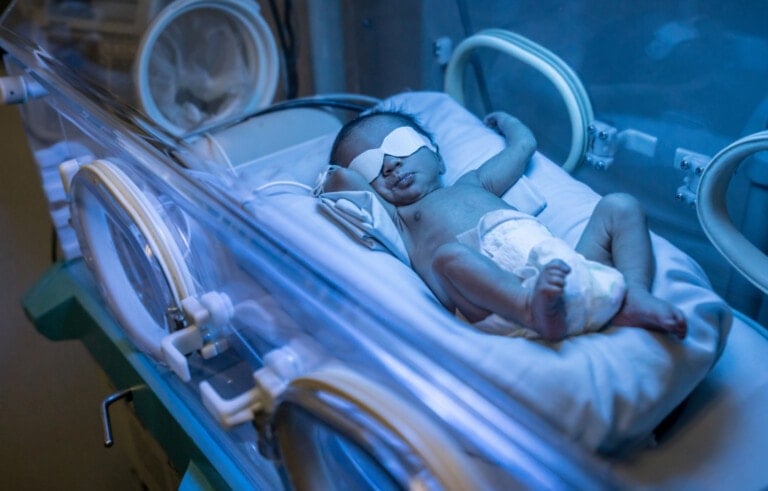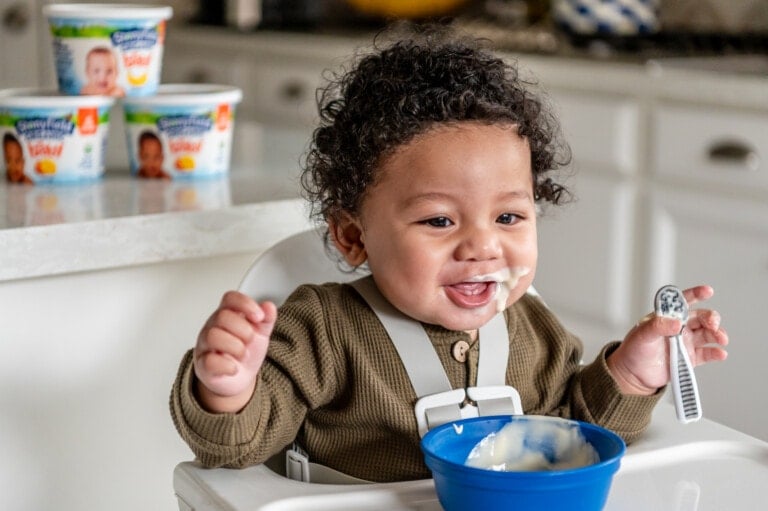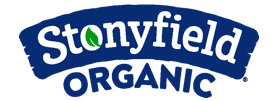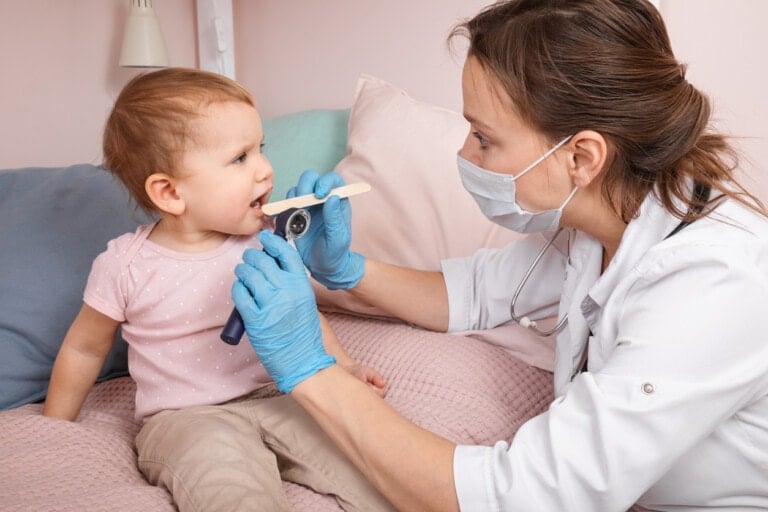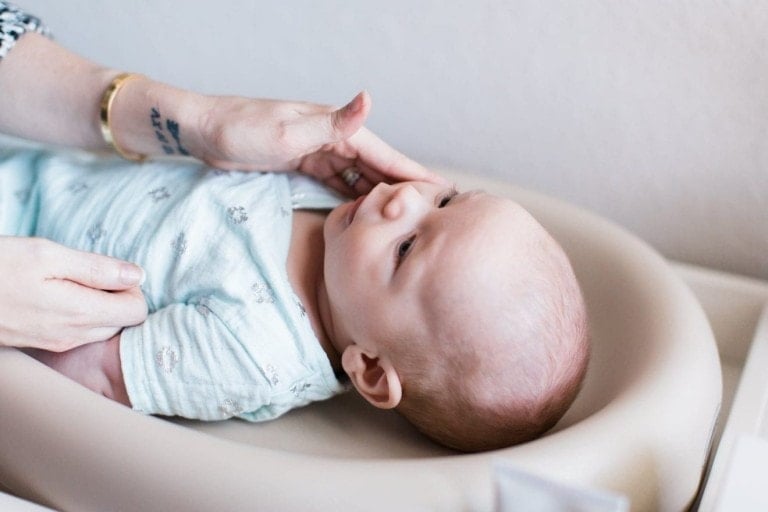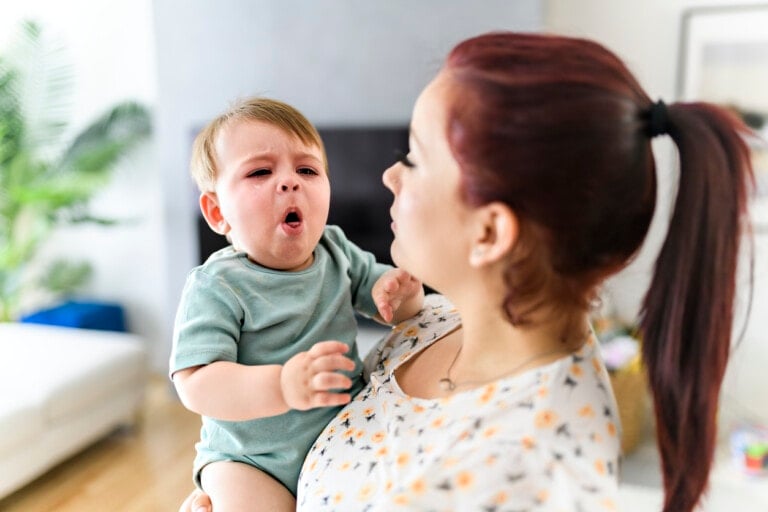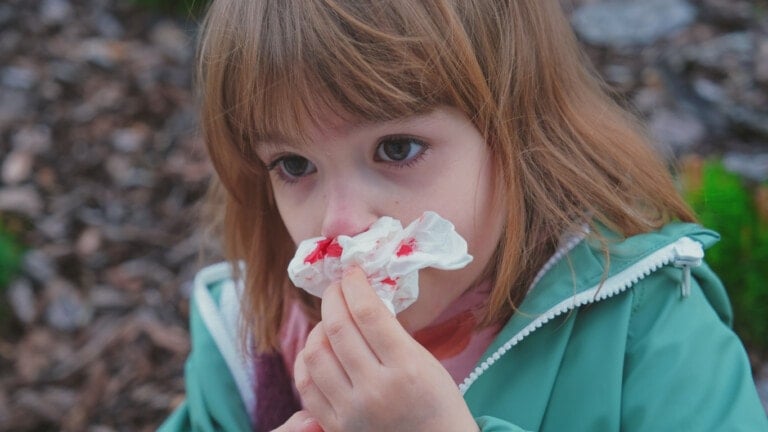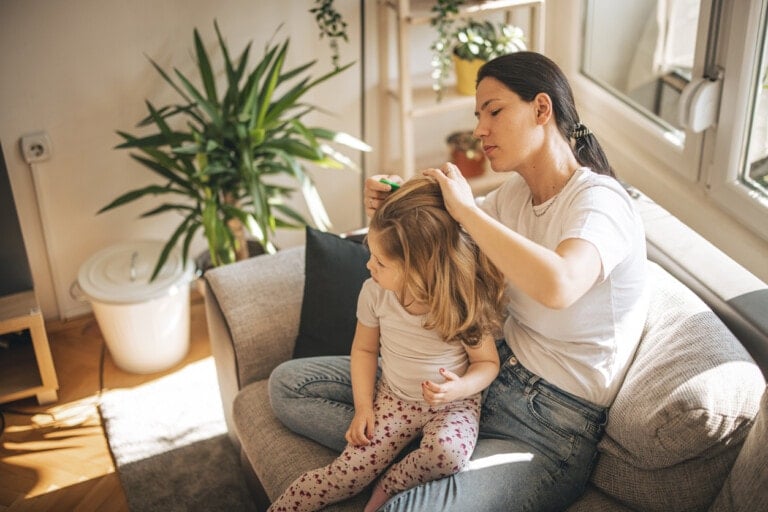Toddlers are wild. Whether at home or on the go with your toddler, having a First Aid Kit nearby is always a good idea. Those pre-made store-bought First Aid Kits are fine and carry some basics. However, they lack some of the essentials that you might need. This is why I’m sharing my list of what to keep in your Toddler’s First Aid Kit. All of these products are great to have for the whole family. So let’s stay safe and start packing!
*Disclaimer: I am not a medical doctor. Check with your physician if you have any questions or need further clarification. This First Aid Kit list should be used as a guide. Every family is unique, and you should tailor your list to fit your family’s needs, including allergies, medications, and health conditions.
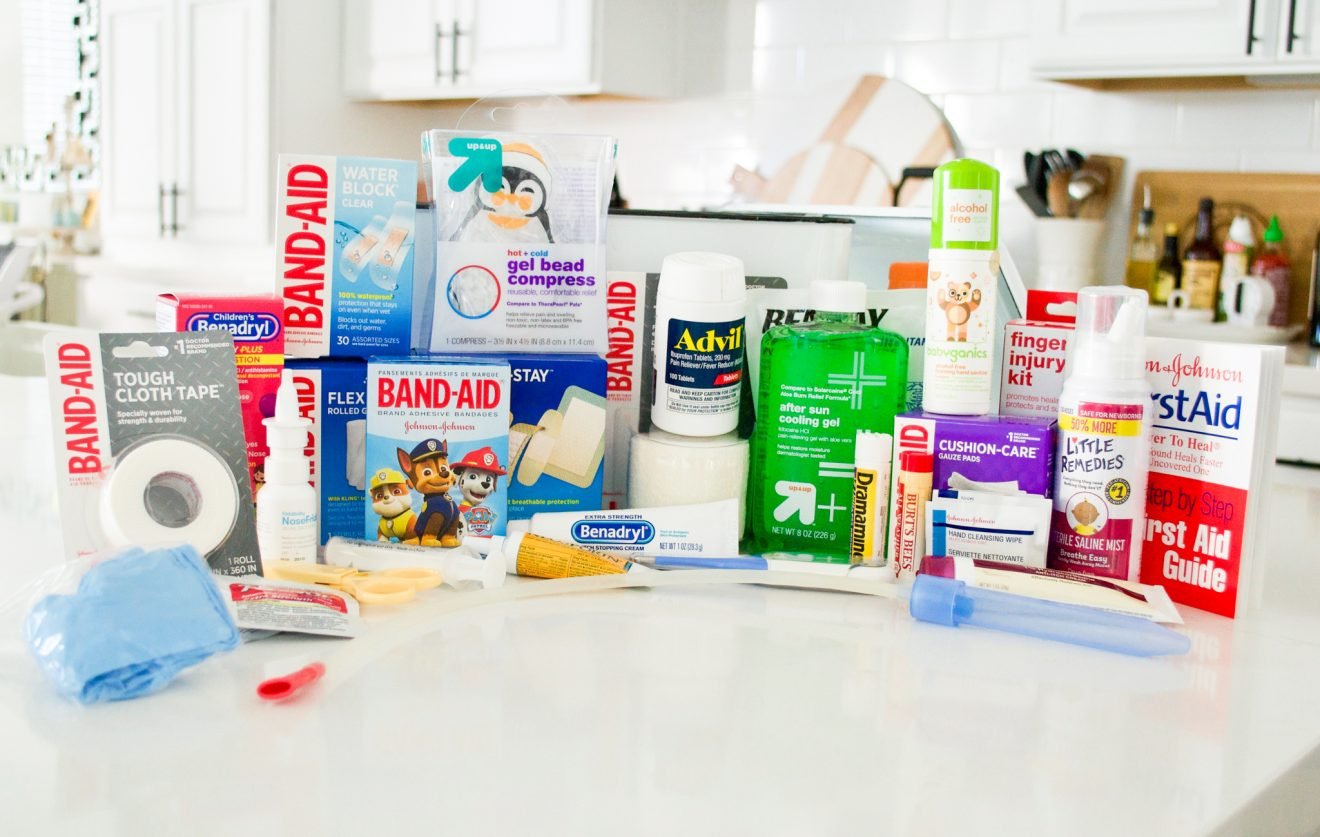
Toddler’s First Aid Kit List
1. First Aid Kit Container
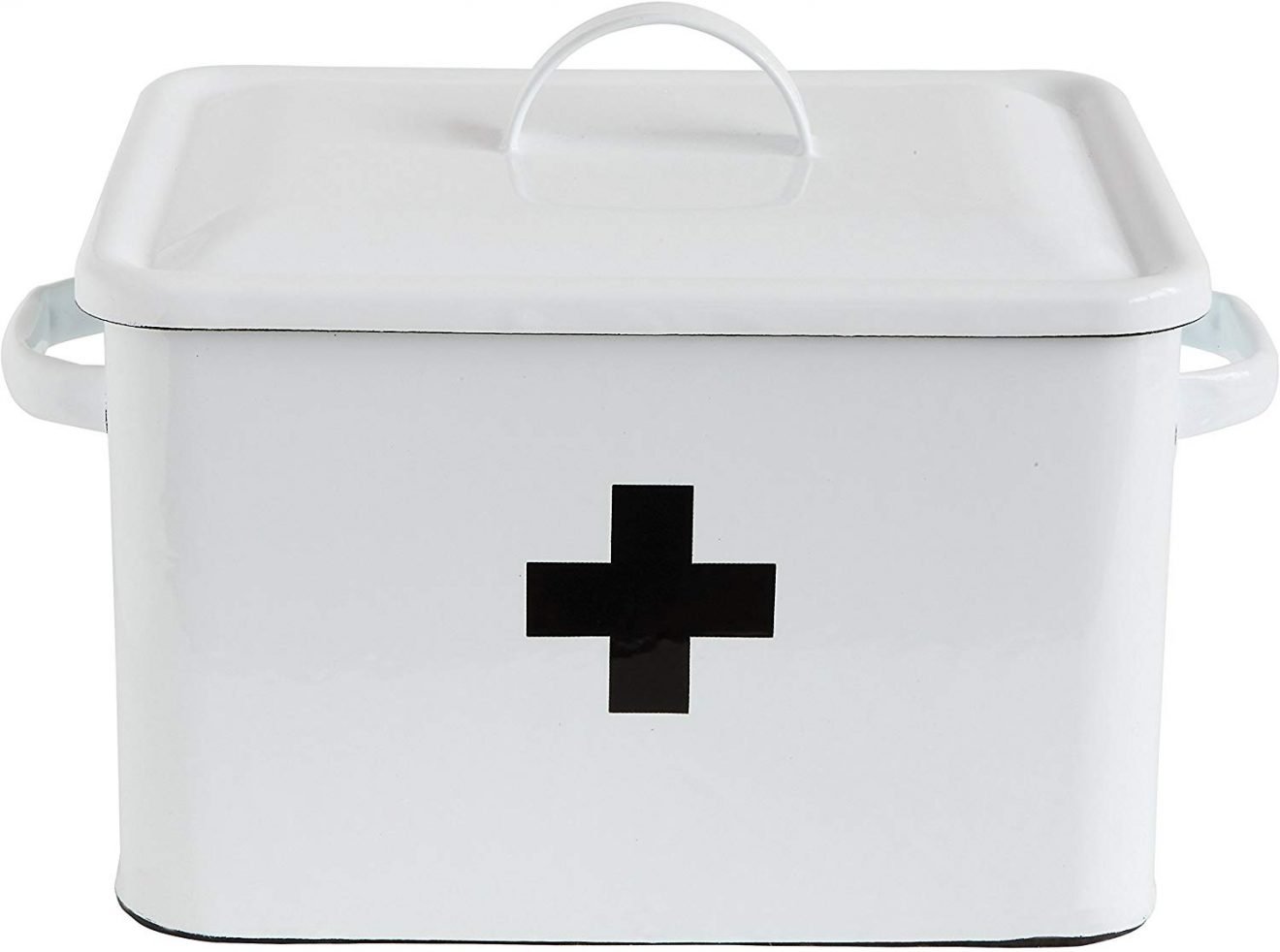
Find a container to store all of your First Aid Kit items. It can be a backpack, a photo box, a small duffle bag, or any medium-sized container. I found this one on Amazon!
2. Adhesive Bandages & Ace Bandages
Bandages are a must in every first aid kit. Adhesive bandages can treat scrapes, bumps, and bruises. Ace bandages can treat sprains, strains, and bigger wounds. I recommend getting all different-sized bandages. Some even have cartoon characters on them, so be sure to look for your toddler’s favorite character! Having their favorite character on their bandage makes treating the wound less scary and a little positive. It also decreases your chances of them fighting you as you try to treat their boo-boo and increases the likelihood of keeping them on. Other items to consider that go along with bandages are:
- Small Scissors: for cutting dressings to the appropriate size, cutting medical tape, opening packages, trimming fingernails and hangnails, etc.
- Sterile Gauze: both rolls and pads for big boo-boos.
- Adhesive Cloth Tape: to hold together the cloth bandages.
- Disposable Gloves: to keep wounds clean and away from infection.
3. Alcohol Wipes
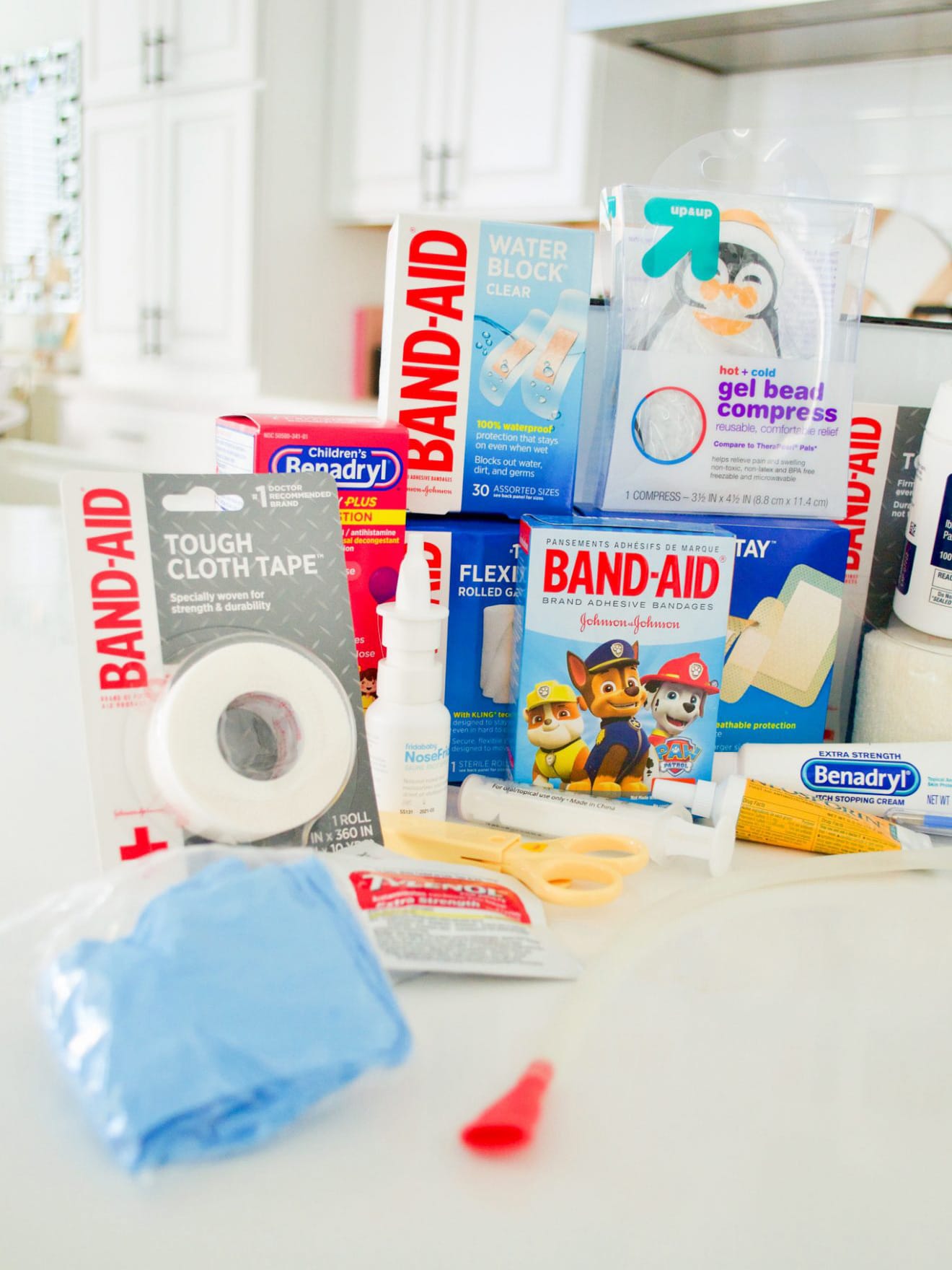
Alcohol wipes are great for cleaning your child’s skin before removing a splinter and sterilizing your First Aid Kit instruments. They are super helpful to have when dealing with injuries. To clean out a wound, all you need is clean water. If you are away from home and this Toddler’s First Aid Kit is for your car, pack a bottle of water for when you aren’t close to a clean water source.
4. Hand Sanitizer
Before handling any wound or treating any injury, ensure your hands are clean. A hand sanitizer gel will do the trick if you’re not near a sink. We don’t want to make anything worse or get infected.
5. Benadryl
Diphenhydramine, better known as Benadryl, is probably the most important over-the-counter medication to have in your first aid kit. It can treat and minimize allergic reactions, insect bites, and hives. It’s truly essential if your child has any seasonal, environmental, or suspected insect allergies. Some pre-made kits will include Benadryl tablets, but for toddlers, you need a bottle of Children’s Benadryl, the liquid form (or the generic equivalent). Don’t forget a measuring device like an oral syringe or teaspoon to give your child the correct dosage.
6. Hydrocortisone Ointment
This inexpensive over-the-counter medication will treat almost anything that itches—insect bites, rashes, poison ivy, etc. If you stop the itch, the kids won’t scratch, reducing the risk of secondary infection.
7. Ibuprofen and Tylenol
Again, most pre-made kits include these medications. However, you will have to add the liquid form for your toddler. These medications are suitable for pain relief and fevers.
8. Numbing Spray
If your child has a burn (even a bad sunburn) or a painful cut or scrape, a numbing spray can help make things better for your child. This spray can be purchased over-the-counter at any pharmacy and is excellent for pain relief.
9. Sunburn Ointment
Speaking of sunburn, having some aloe vera gel can be helpful if your child gets a severe sunburn. To avoid this altogether, we recommend having at least Sunscreen SPF 30 with you and some bug spray.
10. Prescription Medication
If this Toddler First Aid Kit is for your car, ask your child’s physician for an extra prescription for any medication your child uses frequently. This is especially necessary if your child has asthma or any allergies. You’d hate to have to run home for your child’s medication while out with your child when they need that medication right then.
11. Epi-pen
Speaking of allergies, if your child or any family member has severe allergic reactions to anything, ask your physician for a prescription Epi-pen. These can be life-saving.
12. Nausea Medication
Are you planning a long family road trip and afraid your toddler might get car sick? Add some Dramamine to your Toddler’s First Aid Kit in the car. You’ll be happy you did if it prevents you from cleaning out vomit in your car.
13. Thermometer
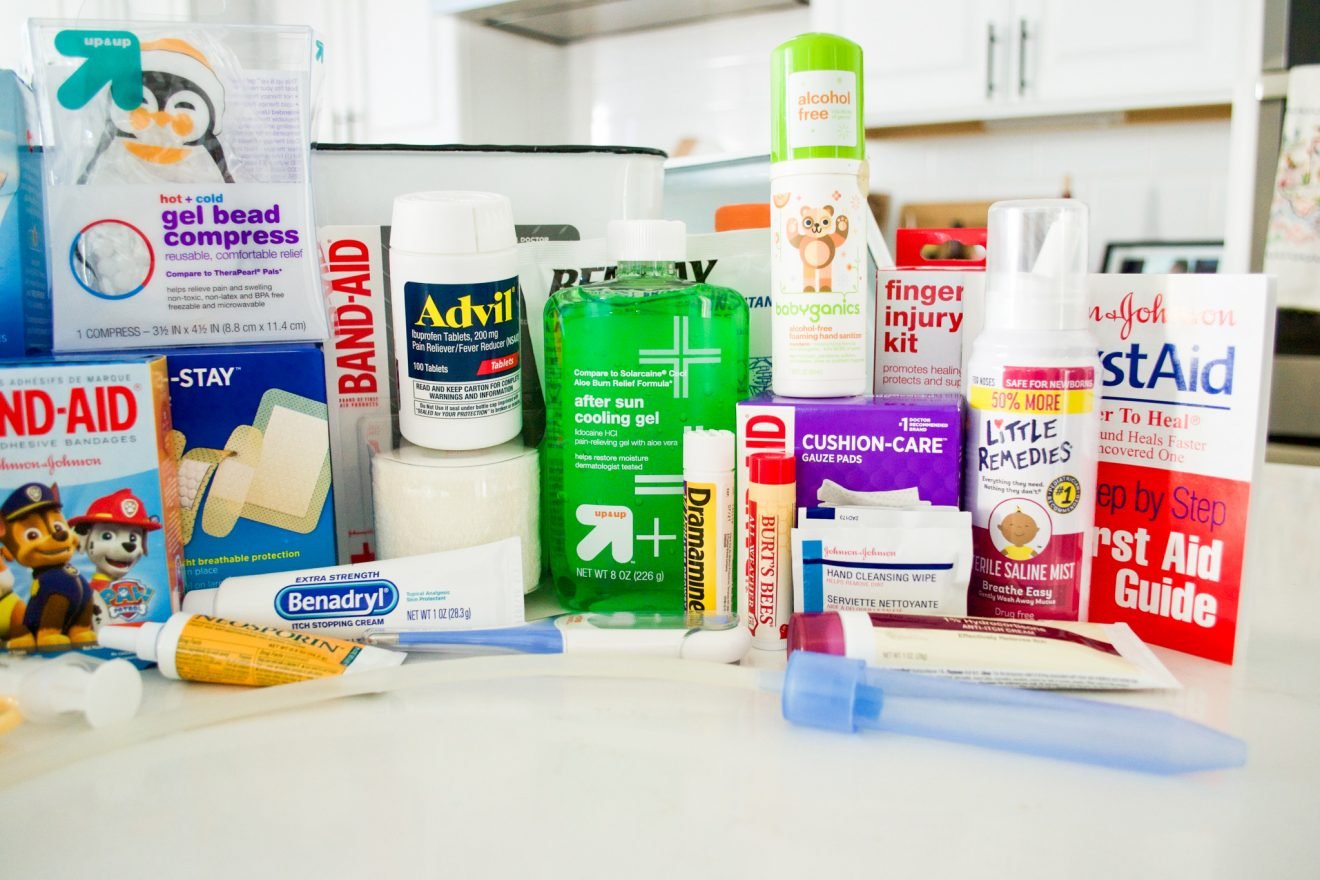
This should go without saying, but you should have a thermometer. You can probably tell if your toddler has a fever just by placing the back of your hand on your child’s forehead. However, doctors like specific temperatures and details, so have a thermometer (ear or oral thermometer) in your Toddler’s First Aid Kit.
14. Instant Cold Packs
Applying cold packs can be so helpful for aches and pains. I also like to have some reusable cold compresses stored in the freezer.
15. Pre-made Finger Splint
Little fingers can get slammed and jammed pretty easily. If unsure if their finger is broken, place it in a pre-made finger splint, then head to the doctor. This will help your child protect it while in transit.
16. Saline Spray & Nasal Suction Device
Most kids hate the “snot sucker,” but it’s a good idea to have one until your child is old enough to know how to blow their nose. Saline and suction can be helpful when trying to loosen mucus and help your child breathe better.
17. Tweezers & Small Magnifying Glass
Tweezers are good to have to remove splinters and pieces of glass that are stepped on. It can also be helpful to remove bugs from ears, fishing hooks from fingers, etc. However, do not use tweezers to remove a tick—tweezers will often only remove the tick’s body but leave the head in the skin.
18. Zip Lock Bags
Dental injuries can happen, so have some zip-lock bags in your Toddler’s First Aid Kit to keep track of any teeth that fall out or are knocked out. If you find a tick or bug on your child or in their ear, place it in the zip lock bag to be able to identify it later. Some bugs carry more severe diseases than others.
19. Baby Wipes
No matter what age your child is, wipes are always helpful to have around. Even to clean hands or wipe noses, wipes are great, especially when boo-boos happen.
20. Chapstick
Lips can also get chapped and burned while playing outside. Keep some chapstick or lip balm to soothe chapped lips, cold sores, lip injuries, and sunburned lips.
21. Gatorade
Children get worked up when they are hurting. Who doesn’t? Giving them a Gatorade can help them calm down and is helpful for hypoglycemia and dehydration.
22. Flashlight & Batteries
If you don’t have a reliable light on your cell phone, include an LED flashlight or headlamp. A flashlight is not just for night-time injuries—you’ll need bright light to get a good look at splinters or look in kids’ mouths, ears, and noses. And make sure that you have some batteries so your flashlight will always be working.
What Should I Do In Case of Accidental Poisoning?
Call the Poison Control Center here immediately!
The Poison Help hotline number is 1-800-222-1222.
Where Do I Keep My Toddler’s First Aid Kit?
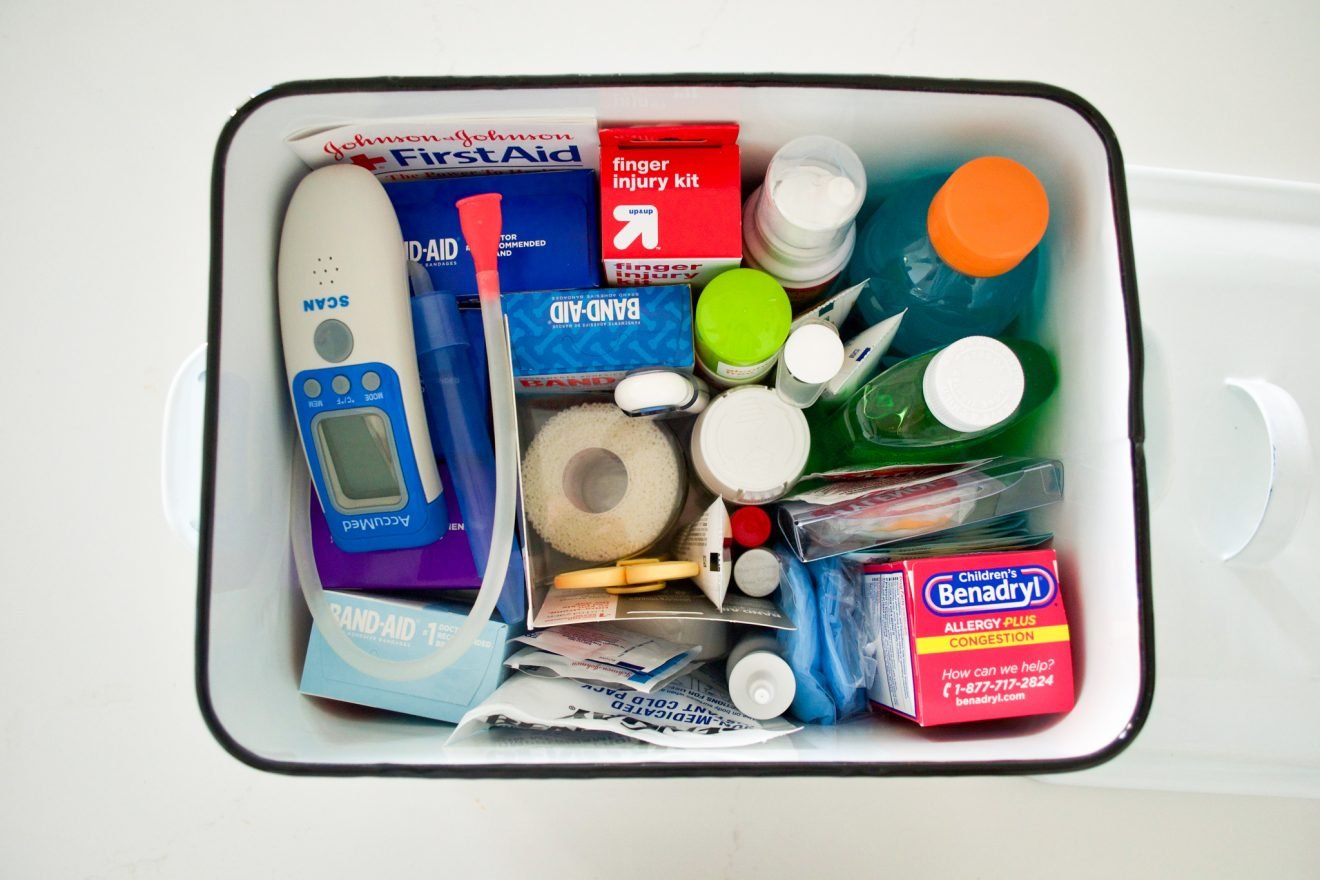
If you can only put together one First Aid Kit, I recommend storing it in your car. You’ll never be without it, whether at home or away, and you will always know where it is. You will never have to remember to pack it when leaving home, which is another perk. If you have more than one family car, I recommend making another First Aid Kit for each vehicle. And if you want another one for the home, even better.
When Should I Restock It?
Check your Toddler’s First Aid Kit yearly and restock it with any low or missing items. Also, look for expiration dates on all medications, including creams and lotions, and replace them as necessary. Your First Aid Kit does not have to be expensive, and you do not need to buy all these items at once. I suggest buying one or two things every couple of shopping trips to start yours. Before you know it, you’ll have a stocked First Aid Kit for your toddler!













